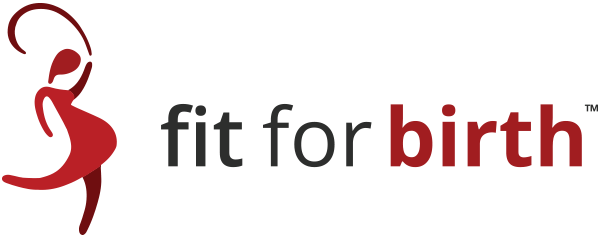
Within the last decade, the pre & postnatal fitness industry has expanded exponentially, but without regulations. In fact, the fitness industry on the whole is not yet regulated by a governing body. For example, in every one of the United States, anyone can call themselves a personal trainer, even if they have no experience, training, certification, or license [1] (2020).
What about a Pre & Postnatal Personal Trainer?
The perinatal period is often the most critical time-period in a woman’s life.
The reality is that there is not a governing body to uphold pre & postnatal professionals to quality standards and continuing education. There is no government agency, no CPT nor an accreditation body designated to ensure that pre & postnatal fitness professionals are doing more good than harm.
To be sure, there are “pros and cons” to both sides of the regulation equation. This is exactly the reason why some physical therapists and medical doctors transition from insurance-based back into “cash-paying” practices, in part to avoid the oppression of the imposed “regulation.” In general, “Government regulations are increasingly attempting to standardize care. However, a one-size-fits-all approach to treatment alienates populations. The government’s standardization of care leaves the decision of a treatment’s effectiveness in the hands of the government rather than in the hands of the experts—the physicians. Therefore, health plans are not necessarily tailored to patients’ needs, which can affect the health of individuals and populations.”[2]
In our own pre & postnatal fitness realm, an all-too familiar game is often being played by medical professionals when it comes to diastasis recti. Since this condition is relatively newly defined, its “regulation” is questionable at best. Doctors often do not perform a surgery – or refer treatment of any kind – to close this separation of the abdominal wall because current medical “regulation” definitions generally do not consider diastasis to be a true medical problem. Commonly, the patient is instead required to pay for a procedure called “tummy tuck,” unless she and her doctor conveniently agree to label it a “herniation,” in hopes that insurance will cover the expenses. This is the challenge of regulation either not being initiated or having been initiated with the wrong definitions or by the wrong special interest groups.

Consider on the other hand what will happen as regulation of diastasis occurs in the medical realm. Who will decide what should be the “appropriate response” to diastasis recti? What if it is a collection of surgeons, doctors who are well-practiced in using prescription medications and surgery as their primary tools of treatment? Could then nearly every diastasis recti receive surgery as standard postpartum care? Would this be more beneficial or hurtful overall?
At Fit For Birth, we know that education of proper breathing and core activation is the foundation of rehabilitation, and is education that must be done whether or not diastasis surgery is performed. In fact, in many cases, this rehabilitation will remove or reduce a person’s desire or need for the surgery to be performed!
So if diastasis-closing surgery turns out to indeed leave women with difficulty breathing naturally and deeply into their torso’s, will standardization of diastasis-closing surgery be a success or a failure? The answer to this question become more easily seen when one considers the “standardization of cesarean section.” This scenario has already played out in the realm of C-section, as this surgery has now been acknowledged by the World Health Organization and other regulatory agencies as being over-used by many modern countries. And the side effects are very real.
In general, regulation creates common standards for things like [3]:
- The regularity of care that you can rely upon no matter which location you visit
- Which level of chemicals are toxic, no matter which state or country you visit
- Which measurement system is in use so that tools in one country fit even if trying to build something in a different country
- The definitions of words so that professionals can understand each other no matter which state or country


But regulation comes with a price. New regulations:
- Require people to learn what they are and agree to practice in a certain manner
- Require people to spend more time “complying” which includes spending time on paperwork and other measurement data, often causing less time to do the work they were originally inspired to do.
- Create a level of standardization that often diminishes the uniqueness of expression and differentiation
- Often do not work or cause unforeseen consequences. (Consider, for example the case of medicalization of childbirth and the current over-prescription of C-sections in many modern nations)
- Can lead to monopolization (“For example, if one company makes one-inch widgets and all other companies make two-inch widget, yet the first company gets a regulation that only one-inch widgets must be used…”[4])
Responsible Regulation
How you choose to regulate yourself as a pre & postnatal professional is currently completely up to you! (And as we’ve been discussing, for better and for worse.) Imagine the difference between opening a franchise versus your own unique studio. One is standardized and regulated, while the other is not. There is no right or wrong, it’s just a matter of what you prefer. And this is the Fit For Birth way: there is no right or wrong. We believe that all human beings are entitled to their opinions regarding how to practice. There will be pros and cons in both.
As a pre & postnatal professional, let’s simplify your choices by emphasizing these three potential options to regulation:
1. None – you do it yourself. You’ll have no partnership or camaraderie to stimulate your professional growth, but also no one providing limitations and guidelines in the development of your practice.
2. Wait for government regulation. It is likely that governmental agencies will take steps in this direction, to some extent, at least at the gross level of fitness & health coaching, but this also may never occur. The downside will inevitably be paperwork and limitations in your practice, although the upside will be the identification of a very clear standard of certification that everyone must adhere to.
3. Hybrid – Join Fit For Birth’s PregnancySāf Regulation, for example.


What if you could have many of the benefits of regulation as well as the freedom to practice powerful as you wish? What if there was an entity you knew you could trust to be your partner in stimulating your professional development, both professionally and personally? Would this appeal to you? If so, Fit For Birth’s PregnancySāf distinction may be ideal for you.
Imagine:
- A form of regulation that you had the freedom to adhere to for as long as you believe in it.
- Feeling pride in your personal choice to be the most elite version of pre & postnatal professional on the planet.
- Partnership from a company whose values you’ve come to trust: Freedom, Acceptance/Diversity, Growth, Integrity, Holistic/Natural Health, Scientific Validity, Simplicity, Depth and Fun.
- Helping to forge the very first pre & postnatal industry regulation, perhaps the only that will exist for decades.
Imagine the fun of joining a community with the same intentions as yours. Imagine having the opportunity to join in monthly mastermind calls, and to receive personalized direction in your business and personal growth. Imagine having open discussions to decide which continuing education is right for you. Imagine if the process was simple and that the system was designed for your ease and explicitly for you and your family to remain low-stress.
This is what Fit For Birth intends to provide in it’s PregnancySāf certification. Birthing bodies around the world will come to know this distinction as the preferred choice for the health of themselves and their children.

Since 2008, Fit For Birth has been proactively researching the truth regarding pre & postnatal wellness, identifying where governmental agencies have so often been overly cautious as well as where industry leaders have been causing serious injury. There is a beautiful balance between the two, and Fit For Birth has been continually committed to finding and teaching this balance.
The last decade has proven Fit For Birth to be the industry leader in exercise programming and holistic health. We are capably comparing the habits of our ancestors with cutting edge scientific research of today. We are so capably professionalizing coaches around the world.
Today, Fit For Birth is blessed to be standing in a position to help oversee the balanced regulation of pre & postnatal professionals around the world. In time, we may not be the only standard, but right now we are one very powerful standard when it comes to being pregnancy safe.
Fit for Birth was initially created from wanting to facilitate the absolute best health for founder James Goodlatte’s first child. We are proud to be the #1 holistic pre and postnatal continuing education company.

If you want to find out if our program is right for you or if you need help choosing a course, schedule a free chat with James.


We love connecting with others who share our passion! Say hi on Instagram! and Tik Tok

Stay up to date with the latest pre and postnatal news with our weekly Sunday Secrets.
[1]https://www.lexology.com/library/detail.aspx?g=bcc934d6-4114-4789-8876-6dbc6856ecdf
[2]https://www.delmartimes.net/sddmt-the-effects-of-health-care-over-regulation-2014jun26-story.html
[3]https://www.quora.com/What-are-some-disadvantages-and-advantages-of-government-regulations
[4]https://www.quora.com/What-are-some-disadvantages-and-advantages-of-government-regulations
